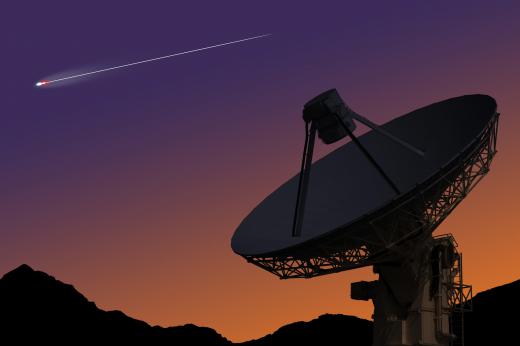What is a Nova?
 Michael Anissimov
Michael Anissimov
A nova is a type of stellar explosion smaller than a supernova or hypernova. The phenomenon occurs in binary star systems, where a white dwarf star absorbs a critical amount of matter from its companion, compressing hydrogen onto its surface and eventually igniting a nuclear explosion. Only about 1/10,000 solar masses of material is ejected, in comparison to 1.38 solar masses of material in a Type I supernova and a dozen or more solar masses in a Type II supernova. Although a Type I supernova also involves a white dwarf star, in that case a majority of the star's entire mass is fused. In the case of a nova, only a tiny percentage is.
A white dwarf star is made up of degenerate matter, a super-dense phase of matter with the unusual property that its pressure is only weakly related to temperature. When a white dwarf's gravitational field sucks hydrogen gas from a nearby star, the gas fuses to the surface of the dwarf, joining the degenerate matter. A white dwarf packs a mass similar to the Sun in a volume similar to that of the Earth, compressing the incoming matter very tightly.

A white dwarf is the "ash" of a much larger star that has fused together much of its hydrogen into heavier elements. Usually, white dwarfs are composed of carbon and oxygen. Fusing carbon and oxygen nuclei into heavier elements is a very energy-intensive process that only occurs in the cores of very massive stars. So, the white dwarf lacks the capability itself to engage in further fusion reactions. But, if enough hydrogen is packed onto its surface, it forms a shell which reaches the critical temperature and pressure for hydrogen fusion, around 20 million Kelvin. The hydrogen rapidly fuses, releasing energy in the same way as a fusion-based nuclear bomb (H-bomb). A nova results.
Because a nova does not destroy its host star, it may happen more than once in the same place. One nova, RS Ophiuchi, has flared six times since astronomers began watching it in 1890.
AS FEATURED ON:
AS FEATURED ON:












Discuss this Article
Post your comments